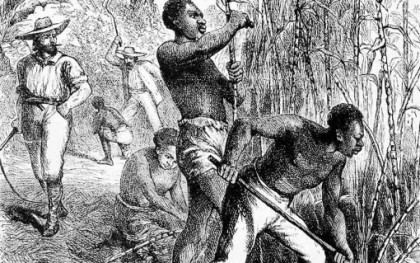Much is being made of current research indicating that the Glyphosate in Monsanto’s herbicide RoundUp is a likely carcinogen. A laboratory-made, liquid life-killing poison that turns dandelions to brown, withered husks in a day; that it probably causes cancer should surprise no one.
Weeds in your lawn; this is a big problem? Apparently so, especially for men. RoundUp gets plenty of advertising time during sports broadcasts on TV, along with ads for high-powered leaf blowers and lawn mowers with comfortable seats. In a gesture to properly establish “the enemy,” weeds have been identified by Madison Avenue as the next-best stand-in for those insecure men who need something to kill. Even the language of war is used; Monsanto is promoting it’s new RoundUp “wand” which “targets” weeds. Next up, smart-phone controlled RoundUp-ready Drones.
Identifying the natural world – weeds – as the “enemy” and developing technologies of death is bad enough, but then, people with gardens have been selecting “good” plants and pulling out “bad” ones for thousands of years; nothing new in that. What is truly dreadful, however, nearly demonic, is the mechanism of avarice – what we commonly call greed – when combined with our modern industrialized approach to social organization. The combination of avarice and technology is literally killing the life of our planet.
This topic of avarice has been on the minds of thoughtful people for a long time. Author Peter Graeber suggests that most of the Ten Commandments can be connected to sins of Greed. He points out that “coveting your neighbor’s wife” is not about sex, since the prohibition against adultery qualifies for its own Commandment, but rather about wanting a slave to clean your house and do the chores. One must assume this would also include pulling weeds.
The roots of slavery, in some metaphorical sense, is about killing weeds. Slaves have been used worldwide in agriculture for many thousands of years. A “round-up” used be about expeditions to capture slaves for picking cotton in American colonies, working on rubber plantations in South America, or cutting sugar cane in Cuba, after all. And of course, a western “round up” was about herding cattle, which is what people become when they are turned into property. It’s still happening; estimates are that 45-million people remain slaves, world-wide.
Today the modern world prefers the slavery of debt, however. Avarice now takes the form of usury, interest rates so high that people remain in perpetual debt. The whims of the slave master have been replaced by the whims of the credit master – the banks, the credit/collection agencies and ironically, the U.S. Government. The roots of bankruptcy are as old as the Ten Commandments; the seven-year limit of bankruptcy law can be found in the Bible. When it comes to student loans for college, however, the biblical bankruptcy rules do not apply; bankruptcy does not exempt a debtor from the obligation to pay U.S. Government education debts.
So there we have it, the RoundUp-Industrial Age that 18th Century poet William Blake envisioned and dubbed “the Satanic Mill.” Graeber notes we are all, in some sense, both master and slave; as masters we select which “weeds” shall live and which shall die, and as slaves in a system through which we ourselves are rounded up to work for others.
Maybe it ends with letting the dandelions grow.






Be First to Comment